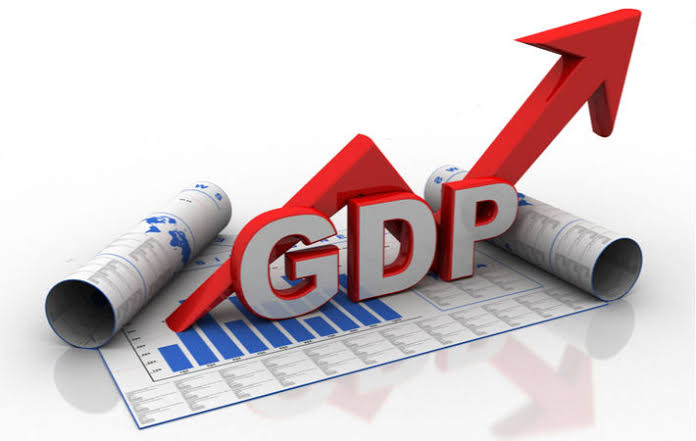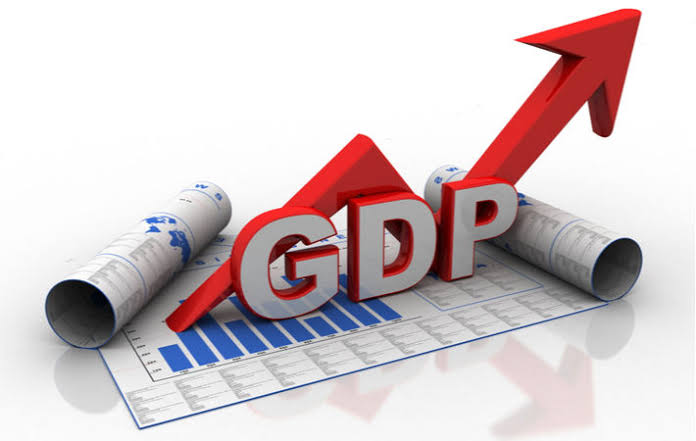The Gross Domestic Product (GDP) is a key indication of a nation’s economic performance and health. Understanding the GDP and the trajectory of the world’s largest economy, the United States, is of utmost importance. This essay seeks to explore the complexities of the US GDP, its trends in growth, and the resource allocation that results in such startling numbers.

Understanding GDP:
A country’s GDP is the total value of all commodities and services produced inside its boundaries during a given time frame, typically a year or a quarter. Consumption, investment, government spending, and net exports (exports minus imports) are its four main divisions. Due to its strong economy and many industries, the United States has an exceptionally large GDP.
Growth Patterns:
The growth patterns of the U.S. GDP over time have varied and have been impacted by both domestic and international forces. The United States saw substantial economic expansion following World War II, thanks to industrialisation and technical advancements. Consistent GDP growth occurred in the second half of the 20th century, occasionally interspersed with recessions. Despite the major effects of the 2008 financial crisis, which caused a dramatic contraction, the United States was able to bounce back and restart its growth track.
Contributing Factors to U.S. GDP Growth:
Technological Innovation:
With Silicon Valley serving as a global hub for tech behemoths and entrepreneurs, the United States has been at the forefront of technological innovation. Innovations in fields like biotechnology, renewable energy, and computer technology have not only spurred GDP development but also changed entire industries.
Consumer Spending:
An important factor in raising GDP has been the American culture of consumerism. Consistent consumer spending, which fuels economic activity, is facilitated by high disposable income, consumer confidence, and a diverse range of goods and services.
Investment
The U.S. is renowned for having a strong entrepreneurial culture and a welcoming business climate. The real estate, manufacturing, and infrastructure sectors all see significant domestic and foreign investment, which is a major factor in GDP growth.
Global Trade:
Both in terms of imports and exports, the United States is a significant participant in world trade. Partnerships in international trade and the export of commodities and services, including technology, food, and entertainment, support GDP growth.
Government Spending:
GDP growth depends critically on public spending on infrastructure, healthcare, education, and defense. Spending by the government fosters economic growth and job creation, laying the groundwork for long-term expansion.
Labor Force:
A competent and varied labor force boosts productivity across industries, which helps the U.S. In the past, immigration has helped the labor force expand by bringing in fresh talent and knowledge.
Resource Allocation and GDP Impact: The U.S. economy’s resource allocation has a significant influence on GDP growth and sustainability. Effective resource management guarantees that the factors of production are used to their full potential, increasing output and spurring economic growth. The patterns of resource allocation in the American economy are best seen in a few main sectors:
Manufacturing
Manufacturing, historically a pillar of the American economy, is crucial to resource allocation. The manufacturing industry has changed as a result of technological development, automation, and innovation, becoming more productive and globally competitive.
Technology and Innovation
The investment of resources in research and development (R&D) is essential for the evolution of technology. Investments in R&D provide innovations that spur economic growth, generate employment, and establish the United States as a global innovator.
Infrastructure Development:
For the economy to flourish, there must be a sufficient infrastructure, including networks for energy, communications, and transportation. Infrastructure projects that receive the proper funding allocation guarantee connection and effective mobility of commodities and services.
Education and Workforce Development:
Spending money on workforce development and education initiatives improves human capital. Higher productivity, creativity, and general economic success are all benefits of a skilled and educated workforce.
Healthcare:
The distribution of healthcare resources has a direct impact on the productivity and health of the labor force. A healthy workforce is ensured by adequate healthcare provision, which also lowers absenteeism and boosts economic production.
Sustainable Practices:
In addition to addressing environmental issues, allocating resources to sustainable practices and renewable energy sources opens up new economic prospects, spurring GDP growth and protecting the environment.
Conclusion.
The Gross Domestic Product of the United States is evidence of its strong economy and flexible resource use. Understanding the complex interaction between GDP growth and resource allocation provides insight into the variables influencing the country’s economic prosperity. The U.S.’s capacity to efficiently allocate resources will continue to be a pillar of sustained economic growth and prosperity as it develops and adjusts to shifting global dynamics.



